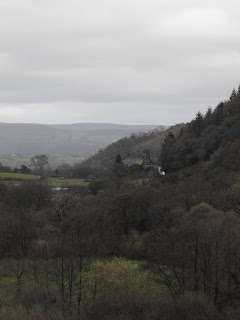
Whilst this book (Cornish Homes and Customs) refers specifically to the rural poor of Cornwall, I don't doubt that much of the detail was applicable to Ag. Labs. across the country.
"Owing to their poverty, the working classes of former times could rarely afford the clothing proper to protect them from the cold and wet. In the earlier part of the last century the farm labourer's working dress consisted of a coarse shirt, a pair of 'duck' (a heavy cotton) trousers not quite reaching to the ankles, a waistcoat, a smock (also made of 'duck') and low-quartered shoes - without socks or stockings. At a later date, when boots came into general use, their leather was frequently so hard from exposure that it was only with the utmost difficulty they could be drawn on. Every worker in those days,' writes Mr Charke, 'had a lace hook, for our boot leather and the laces were too obdurate for fingers alone. If you could only conceive how the men suffered in their feet in summer time from the hot earth which got into their boots, and the perspiration, you would pity them. I dare say they walked from twenty-five to thirty miles day in the course of their work, with raw and blistered feet, and there were many squeals at night when the stockings came off. The wounds! - wounds with blood! All to live, and feed others.' *1
In winter, when the fields were heavy with water, and deep in mud, straw ropes or 'thumb binds' were wound around the legs from the top of the boots to the knee, like a modern puttee. These thumb binds were made of oaten straw, and received their name from being spun around the thumb, an operation quickly performed by those who had had the necessary practice. The upper part of the body was covered with an apron and a shawl made of old sacks, whilst an ancient 'billycock' hat served as the usual headgear for all weathers. Having only one suit of clothes for everyday wear, when the men came home at night soaked to the skin, they were obliged to dry themselves before the fire; whilst the same clothes had to be put on again in the morning, often still wet and icy cold. Rheumatism in consequence was a wellnigh universal malady amongst the poor. At fifty many a man had become practically an 'ancient', having to walk on two sticks, and so stiff in his joints that when he sat down he could scarcely 'rise up' again. The children and women suffered from exposure hardly less than the men. The former were almost invariably underclothed, being frequently without shoes or stockings, or any change of linen. On Saturday nights they had to go to bed early, and naked, in order that their mothers might wash and dry such underclothes as they possessed, to be ready for use again on the Sunday morning. *2

During a frost, or in snowy weather, it was not uncommon to see boys of nine or ten years of age in the fields crying bitterly on account of the cold, and their hands so blue and numbed that they were scarcely able to grasp the frozen turnips which they would be engaged in pulling. After a long day's toil of this sort men, women, and children would return to their homes at night, worn out with fatigue, but still having the household duties - cooking, baking, sewing, or fetching water - to perform before retiring to rest. During the busy seasons of the year, the men would often contrive to cultivate their gardens by moonlight, whilst within the cottage the womenfolk were 'catching up' their various chores which had to be done in readiness for the next day's toil, which started with the dawn."

*1 'Remembrances of Life on a Farm, Old Cornwall, II, No. 2
*2 Dr R Dunstan, Western Morning News, 2 December 1929























































